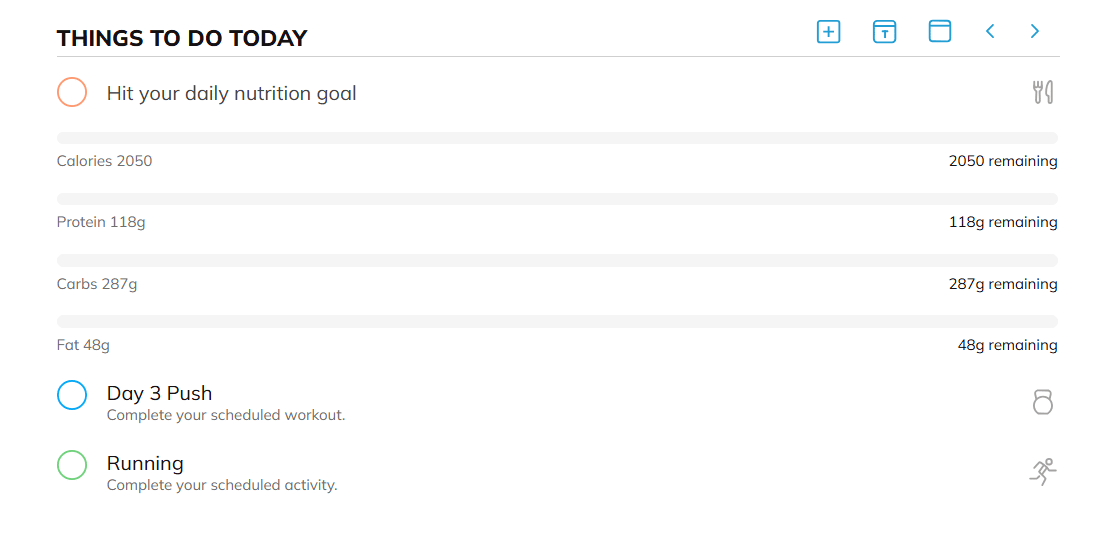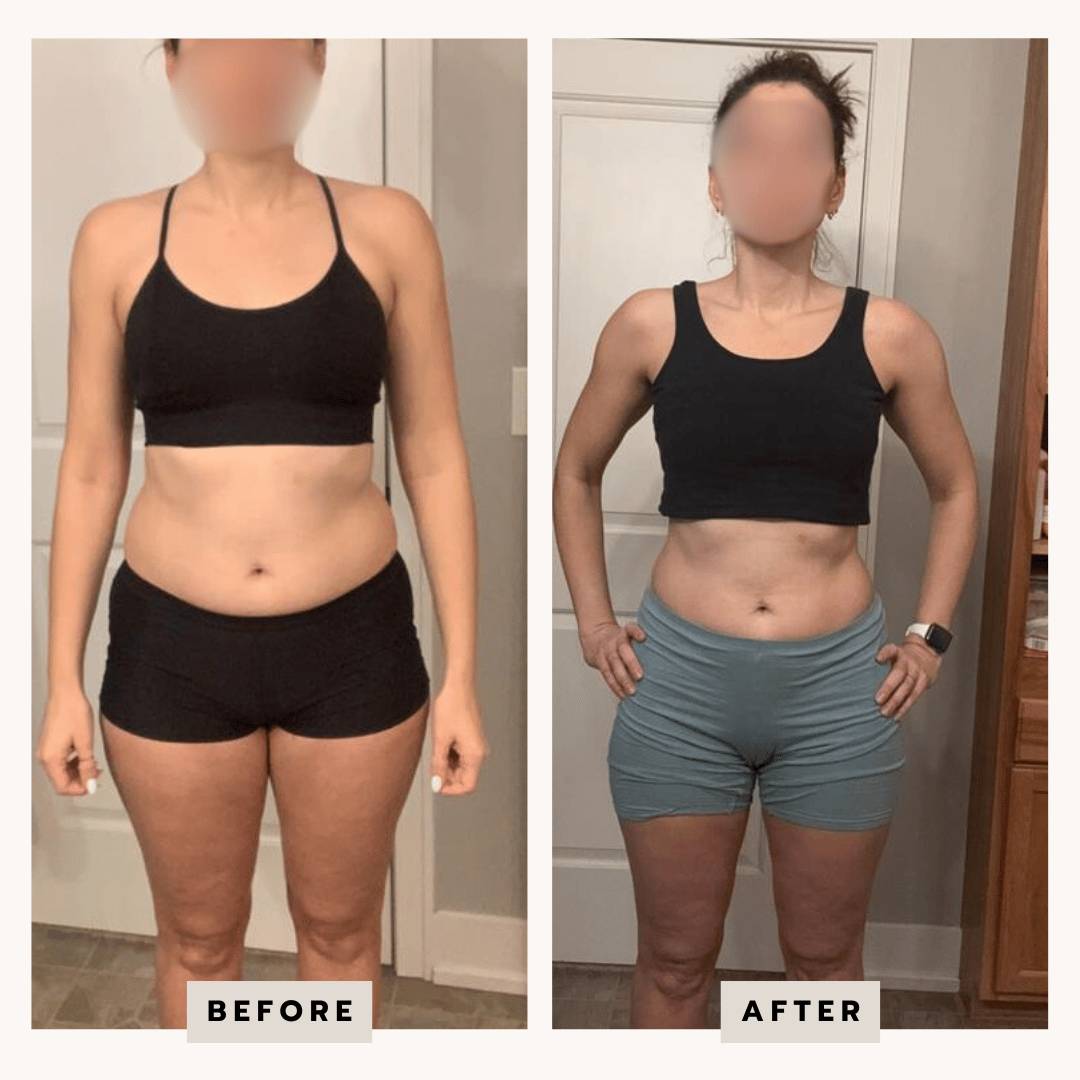Edition #170: Best weight loss speed, strategic strength training, exercise frequency
Oct 24, 2025
Welcome to 1-3-1 Fridays, my weekly newsletter, where I reveal evidence-based strategies to get lean, strong, and create optimal health.
You'll receive one personal health insight, three actionable tips, and one concrete action step. Let's dive in.
What's in store for today:
- What's the ideal rate of fat-loss (weight loss) speed you should go at?
- Stop exercising. Use strategic strength training to bulletproof your body for life.
- How frequently should you work out to see the best results in minimal time?
Perfectionism will paralyze you.
It's done so to me for years.
It's part of why I've struggled with different areas of my life for so long.
I've shared recently that I'm working on improving my cooking skills...
Yet, each time I've tried to go at it 'perfectly', I snap and turn into an unpleasant person.
It's not something I'm proud of.
But it is something I've become more aware of.
Self-observation can lead to valuable insights. The more we slow down and focus, the more we discover.
Perfectionism is a symptom, not the cause.
The real cause is a fixed mindset. This comes from Carol Dweck's 40 years of research on human development.
So it's uncomfortable to come to terms with the fact that, in the kitchen, I've had a fixed mindset.
But there lies the opportunity for growth.
The areas that you're stuck in and can't move forward are the areas that deserve our examination.
Again, slower is better here rather than trying to suppress or push through.
For me, last night was a good reminder of this.
I got annoyed. Pissed off, to be honest.
I let myself feed on the annoyance and let it fuel me for the rest of the evening.
It was supposed to be a relaxing night.
I didn't let it be so.
But the interesting part about a fixed mindset is that you'll try a few times and give up.
A growth mindset thrives and seeks challenges.
We all have both mindsets within us.
The more self-aware you become, the easier it will be to see which one is the driver's seat.
If you want even deeper insight, read some of Jung's books or those of his mentees, like Robert Johnson.
You’ll begin to see which archetype is driving your fixed mindset.
Last night it was my Tyrant.
If you engage with inner work, you can even speak to these parts of you.
Unconventional but surprisingly profound.
These conversations can reveal hidden truths about yourself.
All this to say—health starts within first.
The better you know yourself, the simpler life can become.
I don't think we're as complicated as humans. We just have many unresolved parts of ourselves that need to be re-integrated.
Once you do, life becomes simple.
Lesson: Slow down and you'll learn more about yourself in a day than most people do in a year.
Here's Your 1-3-1 Friday:
1.) How fast can you drop weight
Every successful diet relies on one key principle: eat fewer calories than you burn.
Most diets eventually fail if you do not prepare yourself for lasting success.
Let's cover how you can drop your next 10-30 pounds while fueled by plants.
Fat loss starts when you consume fewer calories than your maintenance level. Maintenance calories are what you need to eat to stay the same weight.
We want to focus on fat loss, not just vegan weight loss. Your weight will change a lot during your fitness journey.
1 pound of body fat contains approximately 3,500 k/cal. To lose 1 pound of body fat, you need to eat 500 fewer calories each day.
This will help you achieve 1 pound of fat loss in a week.
How fast can or should you go?
You can go as fast as you'd like (and most people do, especially in the beginning)...

This can cause long-term failure, especially if you start with a high body fat percentage.
The risks of regaining weight (body fat) increases the more body fat you have to lose and the faster you try to lose it.
Another pitfall is losing muscle as your caloric deficit grows. (A caloric deficit means eating fewer calories than your body needs.)
The faster you try to lose weight, the more calories you cut. This raises your risk of losing valuable muscle tissue. Regaining that muscle takes hours of training.
So, a guideline I've adopted (credit to Andy Morgan) is to aim for no faster than 0.5-0.75% of your bodyweight per week.
The fatter you are, the closer you can push toward 1% per week.
The leaner you are, the closer you should be to 0.5% per week.
How this looks in application:
- I suggest most clients aim for 1-1.25 pounds of fat loss per week.
- If a client is obese or highly overweight, aiming for 1.25 to 1.5 pounds per week might help. However, based on Morgan's work and my experience, most clients usually lose about 1 pound each week.
- For clients who are smaller or lighter, it may make more sense to aim for 0.5 pounds per week.
The numbers above may seem fast or slow to you.
But sustainability has to be pre-built into your strategy before you start cutting fat and dropping weight.
Otherwise, you're setting yourself up for long-term failure.
2.) Use strategic strength training to get lean
When you're tight on time, doing more workouts doesn't make sense.
But doing the right ones strategically can yield a very high ROI if you do this right.
If you're trying to drop weight (body fat) while lifting weights, here's the best system I've created (so far).
Here's how to use strength training during fat-loss:
- Try to lift weights for 3 to 4 days a week. Personally, I prefer 4 days for maintaining muscle, but 3 is the minimum you should do.
- Aim for 80% intensity per set
- Aim for 8-12 reps per set for hypertrophy. You might not build much muscle during fat loss, but a bit of body recomposition can still happen. So, why not go for those bonus gains?
- Focus on frequency and consistency over perfection and complexity
- Track your workouts and focus on personal bests, even if they're not as frequent
- Cap your workouts at 6-8 exercises while targeting volume + intensity as your main drivers
3-4 days of lifting weights is a strong base to protect and preserve muscle tissue.
Any more than this, and you're doing overkill or preparing for a bodybuilding show (or you love living in the gym).
For career-driven people, 3-4 days a week is ideal.
When you train, you're aiming for a specific result.
It makes sense to go after that result each time you train. 80% intensity per set will typically leave you with 1-2 reps left in your tank.
That's usually the sweet spot for muscle retention during fat-loss.
For muscle building, aim for 8-12 reps. This range is backed by science for the best results.
You won’t build muscle while losing fat, but you might see some slight body recomposition.
I'll discuss frequency in the next topic. Tracking your workouts is important.
Try to limit them to 6-8 exercises, especially when you're short on time.
Tracking helps show you patterns over time.
Limit yourself to 6-8 exercises. This keeps the focus on volume and intensity, rather than getting lost in too many choices.
Save this checklist for your next workout cycle.
3.) How often should you workout
To win your fitness for life—and everything else—consistency is key.
Health and fitness are the x-factor for all good things.
Not perfect, but consistent. The ideal frequency is 3-4x a week.
That doesn't mean you have to hit four perfect strength workouts. You don’t need every set and rep to be perfect.

Example of a daily training frequency (blended strength & cardio).
Let me explain.
I used to think that if I missed any exercise, rep, or set, there was no point in doing the workout.
Yes, you should hit your exercise prescription each time you train. You can set up a controlled experiment with the same variables. This helps you see what works and what doesn’t.
That would be the most ideal (and optimal).
But optimal isn't always real.
Some days, you’ll have your 1-year-old with you. You’ll aim for a quick 5-minute strength workout.
Focus on 2 sets of 2 exercises, performing 8-12 reps per set. Push each set to failure.
It ain't perfect (as they say down South). But it works better than doing nothing.
Perfectionism reveals a part of our mind that Jung called the Dabbler/Detached Manipulator, or the procrastinator.
Being perfect in your health or fitness is a fallacy. It's a myth. It's never going to happen every day for the rest of your life.
But what can happen is consistent, imperfect workouts stacked up one on top of each other.
Stick with it, and you'll see changes in muscle, strength, and body composition that work for you.
But you'll need to take imperfect action.
I stress this because I’ve heard it hundreds of times from clients and in conversations over the years.
Your biggest challenge may be facing your perfectionism. If you're like me, you always want to cross your t's and dot your i's.
Focus on frequency and consistency over perfection and complexity.
Get the job done imperfectly and you'll win the fitness game for life.
It really is that simple.
1 Action Step
Upgrade your workouts by choosing one action step from the strength training list above. Take action.
Client of the Week

Crystal is a busy mom and wife.
Taking care of her two boys keeps her days busy.
Yet, losing confidence in her body and health as she aged felt uncomfortable.
She no longer had the strength or stamina to do things she loved, and felt like her eating habits weren’t creating a positive example for her sons.
So we got to work.
Strategy: Our first order of priority was getting her workouts dialed in. Although she was initially resistant to lifting weights (especially heavy ones), we started ramping up.
Starting with a minimum standard of 3 strength workouts, we later scaled to 4 workouts paired with 2-3 days of cardio (which she enjoyed and we did for HEALTH benefits, not fat-loss).
We then analyzed her nutrition and addressed key priority areas, including her protein and carbohydrate intake.
Having done multiple diets and fitness programs in the past, our main goal was to achieve sustainability and maintain results rather than quick fixes.
Tracking her food was her first step, and doing so for 4-5 days a week kept it sustainable.
We also discussed mental fortitude and the importance of self-care, even as a busy mother leading her family (something she sometimes forgot).
Wins: Net loss of 12 pounds of body fat, 4 inches off her waist, confident with her eating choices, and more energetic than she felt in years.
She also started to look forward to her workouts and feel more confident with her body, which rippled into a new career that gave her joy.
Despite several big family trips (one to Arizona and a solo trip to England), she stayed on track with her goals and made significant progress.
Testimony of her commitment to her health.
One Quote To Finish Your Week Strong
Going to a corn maze tomorrow.
One of my favorite yearly family activities.
You like the fall, too?
Hope you and your family are well.
As promised, get leaner on plants in under 5 minutes.
Till next week,
Whenever you're ready, there's 3 ways I can help you:
- Connect with me on Facebook and Instagram and let's be friends.
- Join our free Facebook Group. Get free trainings on how to get lean and strong with plants.
- Want to drop body fat and build lean muscle in a fraction of the time with ease? Apply for Accelerator 1:1 coaching.
